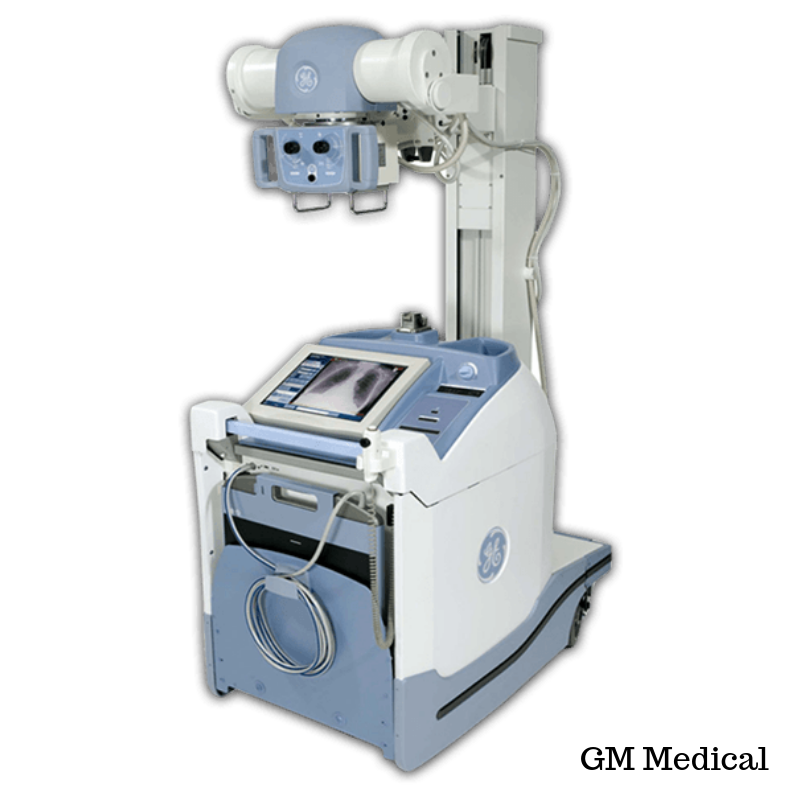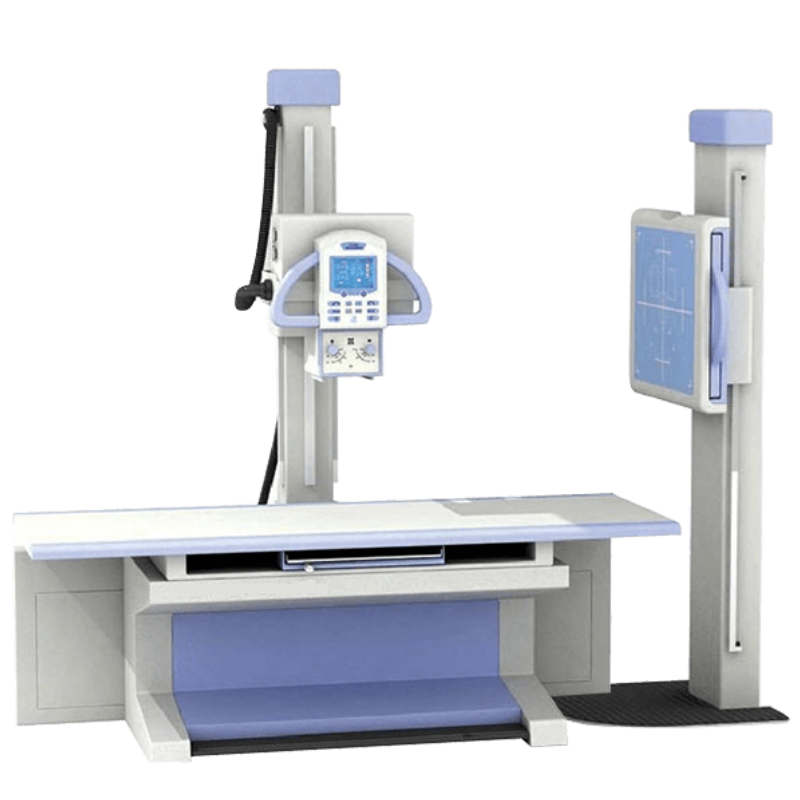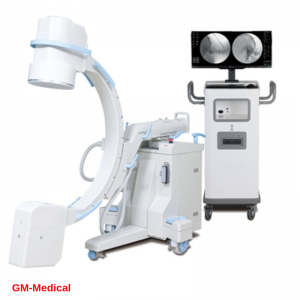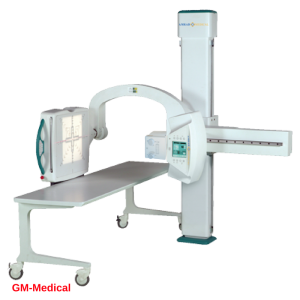The commonest known X-ray Machine is a general wall or ceiling mounted X-ray machine. But there are so many other types of X-Ray machines.
They are categorized based on mounting type, the shape of the X-Ray arm and functionalities.
X-Ray machines require advance planning and so we quote X-ray machines on demand, meaning, we provide you with your customized quote & lead time.

Portable X-ray machines are popular in inpatient facilities, especially in critical care areas where moving patient around might pose unnecessary difficulties or safety concerns.
There are advanced options or portable machines that come with inbuilt CR systems.

As the name suggests, these types of X-Ray machines require a whole room and are the commonest X-Ray machines in the world. They may have either a wall bucky or a ceiling mounted bucky.
It is very important to plan the room construction and ceiling stability in advance, before purchasing these units.
As the name suggests these machines have U or C shaped arms that enable clinicians to maneuver the direction of the X-Ray exposure during medical procedures.
C-Arm X-rays are almost entirely found in procedure rooms like operating theaters, fluoroscopy rooms, and interventional radiology rooms.
U-Arm X-Ray machines are more recent in radiology rooms. The shape of the X-Ray arm determines how they are manipulated. These are specialized machines are requires a prior consultation before a quote.

C-Arm X-Ray Machine

U-Arm X-Ray Machine
Selecting the right machine for your facility is a technical and knowledge-based decision. While cost is an issue, what you intend to do with the machines is what determines the rest of the decision-making process.
Once you have figured out the right specifications for the machine you need, the issue of cost, make, model, new or refurbished follows after that. Here are a few things you must put in consideration.
With the above points put into consideration, the next phase is about the technology you need. The technology choice may have a lot of impact on the overall cost of your X-Ray machine.
Requires traditional X-Ray film and a dark room for processing images. While these are slowly going out of fashion, this will be the cheapest option and best for startup clinics.
With CR-Machines CR Cassettes and CR Printers, you can avoid a traditional darkroom to digitize your images.
Analog machines require higher X-Ray exposure to the patient than the next type. While they are still the #1 choice for most clinics in East Africa due to low start-up cost.
Digital X-Ray machines produce 80% less exposure to the potentially dangerous ionizing radiations. It is the reason why everyone is choosing the digital versions.
While they may seem more expensive at a startup than analog machines, they are actually cheaper than analog. X-Ray films and darkroom expenses are very steep. Not to mention, darkroom processing chemicals are some of the most dangerous poisons used in radiology departments.
DDR machines are the most recent types and not as common in East Africa. Of course, they are the most expensive at startup but overall the cheapest.
With DDR machines, there is no need for CR machines or X-Ray Cassettes. They take digital images directly and automatically saved into your network or in the cloud storage.
Images are available on the spot and through use of the internet, images can be portable across the internet within no time.
Refurbished VS Brand New X-Ray Machine
New machines come with added benefits like longer warranty and use of the latest technology. They also come at a higher cost than refurbished ones.
On the other side, refurbished machines allow you to use higher expensive technologies at a lower cost. It is the main reason why most companies choose to go the refurbished route. A refurbished DDR machine could cost the same as a new digital machine, for example.